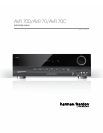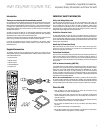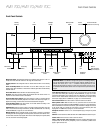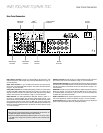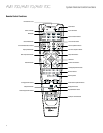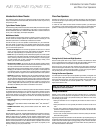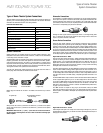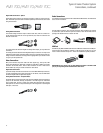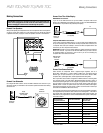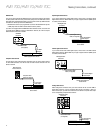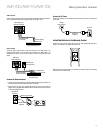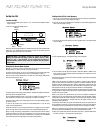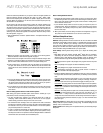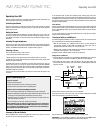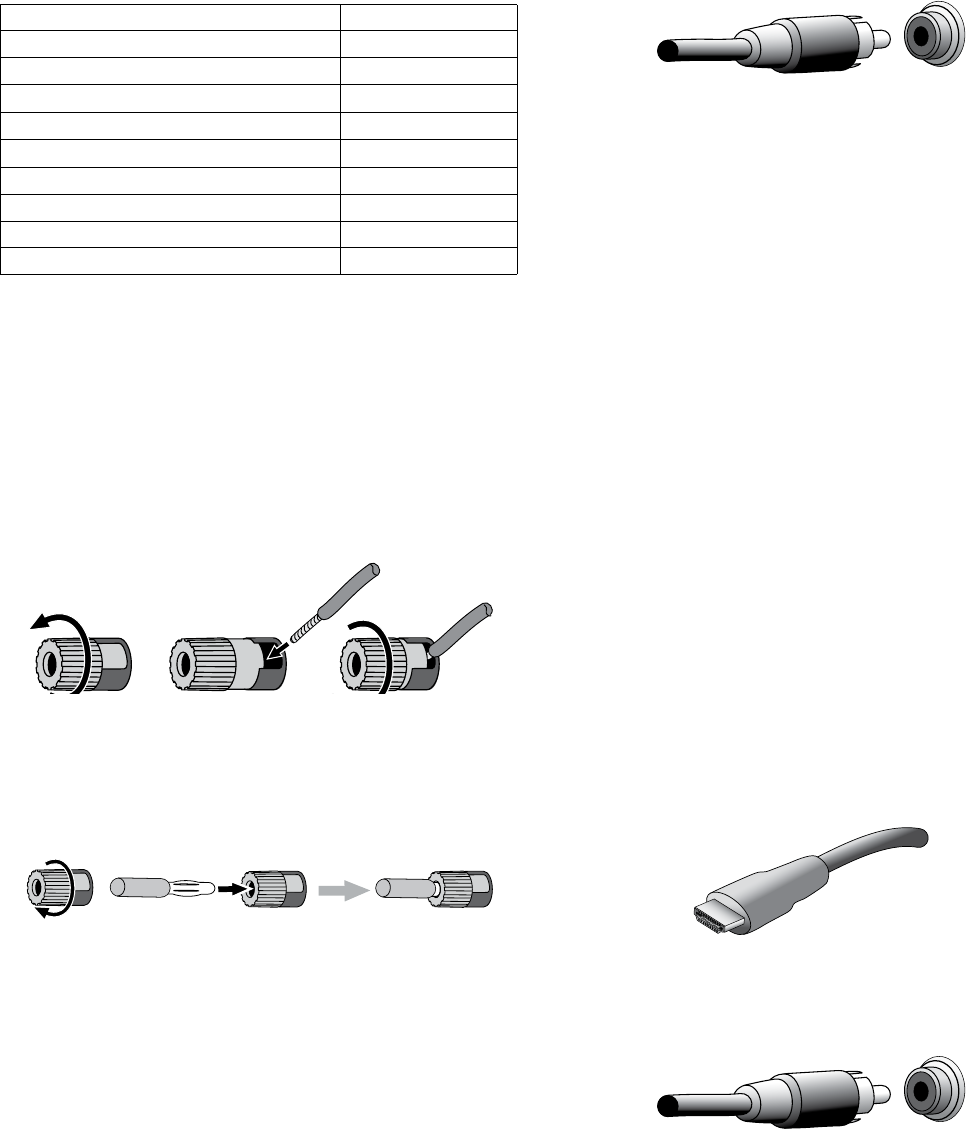
AVR 700/AVR 70/AVR 70C
9
Types of Home Theater
System Connections
Types of Home Theater System Connections
There are different types of audio and video connections used to connect the AVR to your
speakers, your TV or video display, and your source devices. The Consumer Electronics
Association has established the CEA
®
color-coding standard.
Connection Color Guide Table
Analog Audio Connection Color
Front Left/Right White/Red
Center Green
Surround Left/Right Blue/Gray
Subwoofer Purple
Digital Audio Connection Color
Coaxial (input or output) Orange
Optical Input Black
Analog Video Connection Color
Composite Video Yellow
Speaker Connections
Speaker cables carry an amplified signal from the AVR’s speaker terminals to each
loudspeaker. Each cable contains two wire conductors, or leads, that are differentiated
in some way, such as with colors or stripes.
The differentiation helps you maintain proper polarity, without which your system’s low-
frequency performance can suffer. Each speaker is connected to the AVR’s speaker-
output terminals using two wires, one positive (+) and one negative (–). Always connect
the positive terminal on the speaker, which is usually colored red, to the positive terminal
on the AVR, which is colored as indicated in the Connection Color Guide Table, above.
The negative terminals on the speakers and the AVR are black.
Your AVR uses binding-post speaker terminals that can accept bare-wire cables or
banana plugs. Bare-wire cables are installed as shown below:
1. Unscrew Cap 3. Tighten Cap2. Insert Bare Wire
Banana plugs are inserted into the hole in the middle of the terminal cap, as shown
below:
A. Tighten Cap B. Insert Banana Connector
into Hole in Cap
Always connect the colored (+) terminal on the AVR to the (+) terminal on the speaker
(usually red), and the black (–) terminal on the AVR to the (–) terminal on the speaker
(usually black).
IMPORTANT: Make sure the ( + ) and ( – ) bare wires do not touch each other or
the other terminal. Touching wires can cause a short circuit that can damage your
AVR or amplifier.
Subwoofer Connections
The subwoofer is a speaker dedicated to reproducing only the low (bass) frequencies,
which require more power. To obtain the best results, most speaker manufacturers offer
powered subwoofers that contain their own amplifiers. Use a single RCA audio cable
(not included) to make a line-level (non-amplified) connection from the AVR’s Subwoofer
connector to a corresponding input jack on the subwoofer.
Although the AVR’s purple subwoofer output looks similar to a full-range analog audio
jack, it is filtered so that only the low frequencies pass through it. Don’t connect this
output to any device other than a subwoofer.
Source Device Connections
Audio and video signals originate in source devices (components where a playback
signal originates) such as your Blu-ray Disc or DVD player, CD player, DVR (digital video
recorder) or other recorder, tape deck, game console, cable or satellite television tuner,
MP3 player or a device docked in the AVR’s USB port. The AVR’s FM/AM tuner also counts
as a source, even though no external connectors are needed other than the AVR’s FM and
AM antennas. Separate connectors are required for the audio and video portions of the
source device’s signal, except for digital HDMI connectors. The types of connectors you
use will depend upon the capabilities of the source device and of your TV or video display.
Digital Audio Connections – HDMI
There are two types of audio connections – digital and analog. Digital audio signals are
required for listening to sources encoded with digital surround modes, such as Dolby
Digital and DTS, or for uncompressed PCM digital audio. Your AVR has three types of
digital audio connectors: HDMI, coaxial and optical. Do not use more than one type of
digital audio connector for each source device. However, it’s okay to make both analog
and digital audio connections to the same source.
Your AVR is equipped with four rear-panel HDMI input connectors and one HDMI monitor
output connector. HDMI technology enables digital audio and video information to be
carried using a single cable, delivering the highest quality picture and sound. If your TV
or video-display device has an HDMI input connector, make a single HDMI connection
from each source device to the AVR. Usually, a separate digital audio connection is not
required.
The AVR’s HDMI Monitor Output connector contains an Audio Return Channel (ARC) that
carries a digital audio signal from your TV or video display back to the AVR. It allows
you to listen to HDMI devices that are connected directly to your TV (such as an Internet
connection) without making an additional connection from the device to the AVR. The
ARC signal is active when the TV source is selected. See Additional Setup Menu Items,
on page 15, for more information.
The HDMI connector is shaped for easy plug-in (see illustration, below), and HDMI
cable runs are limited to about 10 feet (3m). If your video display has a DVI input and is
HDCP-compliant, use an HDMI-to-DVI adapter (not included), and make a separate audio
connection.
Digital Audio Connections – Coaxial
Coaxial digital audio jacks are usually color-coded orange. Although they look like
standard RCA-type analog jacks, you should not connect coaxial digital audio outputs to
analog inputs or vice versa.



